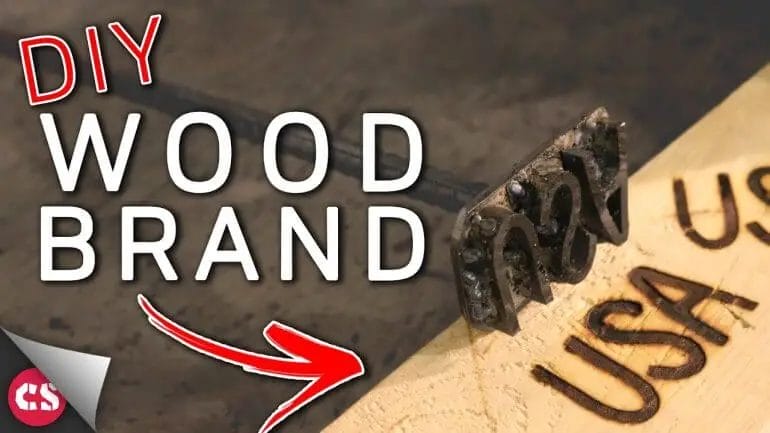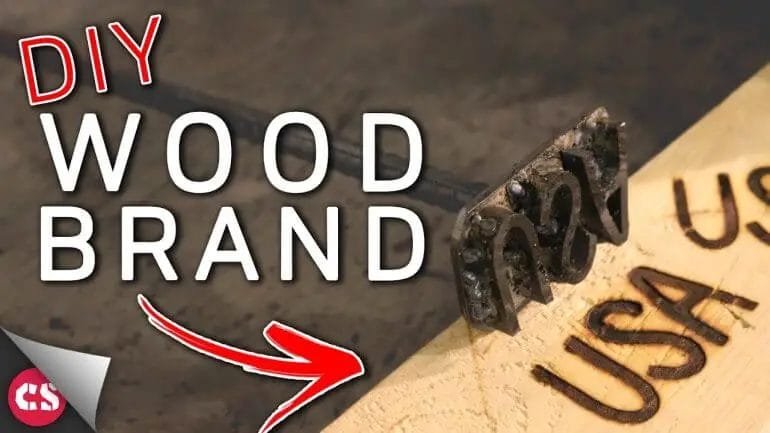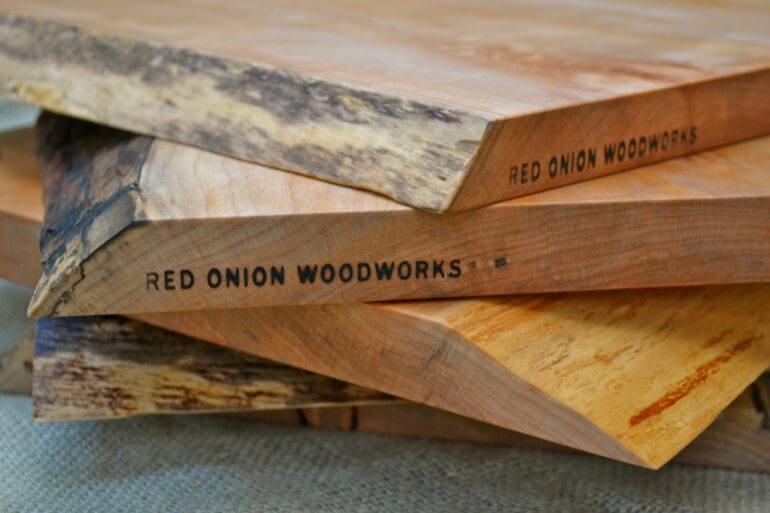Branding wood is a creative and effective way to leave a lasting impression on your woodworking projects. Whether you’re looking to add a personal touch or enhance the professional appearance of your work, branding can be a unique and stylish solution. By using heat and pressure, you can create intricate designs or simple logos on a variety of wooden surfaces. From furniture to crafts, branding wood allows you to showcase your craftsmanship and make a statement with every piece.
One popular method of branding wood is using a wood burning tool, also known as a pyrography pen. These pens typically have interchangeable tips that allow you to create different designs or patterns. By heating the tip and pressing it against the wood, you can burn your desired image onto the surface. This method gives you precise control over the branding process and allows for intricate detailing.

Another option for branding wood is the use of custom-made branding irons. These irons are typically made of metal and can be personalized with your own design or logo. By heating the iron and pressing it onto the wood, you can create a clean and professional-looking branded mark. Custom branding irons are a great choice for businesses or individuals who want to establish a consistent brand identity on their wooden products.
Before branding wood, it’s important to prepare the surface properly. Sanding the wood smooth and cleaning off any dust or debris will ensure a clean and even branding. It’s also a good idea to

Choosing the Right Wood for Branding
When it comes to branding, the material you choose for your project can make a significant impact on the final product. Wood is an excellent choice for creating a distinctive and memorable brand, as it offers a natural and rustic appeal. However, not all types of wood are suitable for branding purposes. In this section, we will provide you with some essential tips on selecting the best type of wood for your branding project.
Durability
One of the essential factors to consider when choosing wood for branding is durability. The wood should be able to withstand the heat and pressure involved in the branding process without warping or cracking. Hardwoods such as maple, oak, and walnut are known for their strength and durability, making them ideal choices for branding projects.
Wood Grain
The grain pattern of the wood plays a significant role in the overall appearance of your branded products. Different types of wood have distinct grain patterns, ranging from straight to wavy or even marbled. Consider the aesthetic you want to achieve and select a wood species with a grain pattern that complements your brand image.
Contrast and Clarity
When branding wood, it is essential to choose a wood type that offers good contrast and clarity. Light-colored woods like birch or ash provide an excellent base for dark-colored branding marks, while dark woods like mahogany or cherry can showcase lighter-colored branding. Consider the color palette of your brand and select a wood species that will allow your branding to stand out.
Sustainability
In today’s eco-conscious world, sustainability is a crucial consideration when choosing any material, including wood. Opt for wood species that are sustainably sourced and have FSC certification. These certifications ensure that the wood has been harvested responsibly, reducing the negative environmental impact of your branding project.
Availability
Another practical consideration when choosing wood for branding is availability. Some wood species may be more readily available than others, depending on your location. Consider the accessibility of the wood species you are interested in and ensure that you can source it easily for your project.
Budget
Lastly, it is important to consider your budget when selecting wood for branding. Different wood species have varying costs, depending on factors such as scarcity and processing requirements. Determine your budget and choose a wood type that meets your branding needs without exceeding your financial limitations.
By considering factors such as durability, wood grain, contrast and clarity, sustainability, availability, and budget, you can select the best type of wood for your branding project. Remember that the wood you choose will not only affect the visual appeal of your branded products but also their longevity and overall quality.

Tips and Techniques for Creating Custom Wood Brands
Creating custom wood brands can add a unique touch to your woodworking projects. Whether you want to leave your mark on your creations or create a personalized gift for someone, designing and creating your own wood brand can be a rewarding endeavor. In this section, we will provide step-by-step instructions and share some valuable tips and techniques to help you create custom wood brands.
1. Determine the Design
The first step in creating a custom wood brand is to determine the design you want to imprint on the wood. This can be a logo, a monogram, a symbol, or any other design that holds significance to you. Consider the size and complexity of the design, as intricate designs may be more challenging to create.
2. Choose the Wood
Next, select the type of wood you want to use for your brand. Hardwoods such as oak, maple, or cherry are ideal choices as they can withstand the heat and pressure required for branding. Ensure that the wood is smooth and free from any defects or imperfections that could affect the final result.
3. Prepare the Branding Iron
To create the branding iron, you will need a piece of steel that matches the design of your brand. You can either purchase pre-made branding irons or have one custom-made based on your design. Alternatively, if you have some metalworking skills, you can create your own branding iron using a metal file and a heat-resistant handle.
4. Heat the Branding Iron
Before branding the wood, you need to heat the branding iron. This can be done using a propane torch or by placing the branding iron in a fire until it reaches the desired temperature. Ensure that the branding iron is evenly heated to achieve consistent results.
5. Brand the Wood
Once the branding iron is heated, carefully press it onto the wood surface with firm, even pressure. Hold the branding iron in place for a few seconds to ensure that the design is imprinted onto the wood. Be cautious not to move the branding iron during the process, as this can result in a blurry or incomplete brand.
6. Finishing Touches
After branding the wood, allow it to cool before applying any finishes or sealants. You can further enhance the appearance of the brand by sanding the surrounding area to create a smooth and refined finish. Apply a wood finish or sealant of your choice to protect the wood and enhance the longevity of the brand.
7. Practice and Experiment
Creating custom wood brands is a skill that requires practice and experimentation. Start by practicing on scrap pieces of wood to familiarize yourself with the branding process and to fine-tune your technique. Experiment with different temperatures, pressures, and branding durations to achieve the desired outcome.
8. Safety Considerations
When working with branding irons and heating equipment, it is essential to prioritize safety. Always wear appropriate protective gear, such as heat-resistant gloves and eyewear, to prevent any injuries. Work in a well-ventilated area, as the burning wood and fumes can be hazardous.
In summary, creating custom wood brands is a creative and rewarding process. By following these tips and techniques, you can design and create personalized wood brands that add a unique touch to your woodworking projects. Remember to practice, experiment, and prioritize safety throughout the process.

Safety Measures for Wood Branding
Wood branding, also known as woodburning, is a popular technique used to add decorative designs, logos, or text onto wooden surfaces. While it can be a rewarding and creative process, it is important to prioritize safety when branding wood. Here are some essential precautions and safety guidelines to follow:
1. Personal Protective Equipment (PPE)
Always wear the appropriate personal protective equipment (PPE) when wood branding. This includes:
- Safety goggles or glasses to protect your eyes from sparks and flying debris
- Heat-resistant gloves to protect your hands from burns
- Long-sleeved clothing and non-slip footwear to minimize the risk of burns
- A respirator or dust mask to prevent inhalation of smoke, fumes, and particulate matter
2. Work in a Well-Ventilated Area
Wood branding produces smoke, fumes, and odors which can be harmful if inhaled. Therefore, it is important to work in a well-ventilated area. Open windows and doors to allow for proper air circulation, or consider using a fume extractor or ventilation system to remove the smoke and fumes from the workspace.
3. Fire Safety Precautions
Wood branding involves working with high temperatures, which increases the risk of fire. To minimize the risk of fire:
- Ensure that there are no flammable materials or substances near the workspace
- Keep a fire extinguisher nearby and know how to use it
- Avoid working near curtains, loose papers, or other easily ignitable materials
- Have a clear and accessible path to exit the workspace in case of an emergency
4. Proper Handling of Branding Tools
When working with branding tools, such as a woodburning pen or branding iron, it is important to handle them with care:
- Allow the branding tool to heat up and cool down properly according to the manufacturer’s instructions
- Never touch the heated tip of the branding tool with bare hands or place it on flammable surfaces
- Always use a heat-resistant surface or workbench to place the hot branding tool
- Store the branding tool in a safe and secure location when not in use
5. Proper Use of Power Supply
If you are using a woodburning pen, ensure that the power supply is in good condition and meets the necessary safety requirements. Here are some tips:
- Inspect the power cord and plug for any damage or fraying before use
- Do not overload electrical outlets by plugging in multiple devices
- Use a surge protector or voltage regulator to protect against power surges
- Do not leave the woodburning pen unattended while it is plugged in
6. Proper Storage and Disposal of Materials
After wood branding, it is important to properly store and dispose of the materials used to prevent accidents or hazards:
- Allow the branding tools and materials to cool down completely before storage
- Store branding tools in a designated area away from flammable materials
- Dispose of used branding tips, sandpaper, and other waste materials in a fire-resistant container
- Do not dispose of waste materials in regular trash bins, as they may still be hot and pose a fire risk
By following these safety measures, you can minimize the risk of accidents, burns, and hazards when wood branding. Remember to always prioritize safety and take the necessary precautions to protect yourself and your surroundings.
Creative Applications for Wood Branding
Wood branding, also known as pyrography, is a technique that involves burning images or designs onto wooden surfaces. Traditionally used for marking or personalizing wood products, wood branding has evolved into a popular form of artistic expression. Beyond its functional uses, wood branding offers a range of creative applications that can enhance DIY and professional projects.
1. Custom Signage
Wood branding provides a unique and rustic touch to custom signage. Whether you’re creating a wooden sign for your business, event, or home decor, branding can add a personalized and professional look. The burned-in designs and lettering create a distinctive aesthetic that stands out from traditional painted or printed signage.
2. Home Decor Items
Wood branding can elevate various home decor items, adding a touch of warmth and character. From coasters and cutting boards to photo frames and wall art, branding can transform ordinary wooden objects into personalized masterpieces. You can create custom designs, monograms, or even replicate intricate patterns using wood branding techniques.
3. Furniture Enhancement
Wood branding can be applied to furniture to enhance its visual appeal. By branding unique designs, logos, or patterns onto tables, chairs, or cabinets, you can create one-of-a-kind pieces that reflect your personal style. The burned-in marks can add depth and texture to the wood, making it stand out and adding a sense of artistry to your furniture.
4. Personalized Gifts
Wood branding offers endless possibilities for creating personalized gifts that leave a lasting impression. You can brand initials, names, or special messages onto wooden products such as cutting boards, wine boxes, or keychains. These unique and customized gifts are perfect for birthdays, anniversaries, weddings, or any other special occasion.
5. Craft Beer Tap Handles
For craft breweries or homebrewers, wood branding can be utilized to create distinctive tap handles. By branding the brewery’s logo or creative designs onto the wooden handles, you can enhance the branding and give each beer a unique personality. This adds a professional and artisanal touch to the overall beer-drinking experience.
6. Wooden Utensils and Kitchenware
Wooden utensils and kitchenware can be personalized and elevated using wood branding techniques. From spoons and spatulas to cutting boards and serving trays, branding can add a touch of uniqueness and artistry to these everyday items. It not only enhances their visual appeal but also creates a sense of craftsmanship and attention to detail.
7. Branding on Musical Instruments
Wood branding can be a captivating addition to musical instruments, such as guitars, ukuleles, or drumsticks. By incorporating unique designs or band logos, wood branding adds a visually striking element to the instrument’s aesthetics. It can also create a connection between the musician and their instrument, making it truly one-of-a-kind.
8. Promotional Merchandise
Wood branding can be used to create promotional merchandise for businesses or events. From wooden keychains and coasters to bottle openers and phone cases, branding these items with your logo or a creative design can leave a lasting impression on customers and event attendees. It adds a touch of sophistication and uniqueness to your promotional efforts.
Wood branding offers a myriad of creative applications that can elevate DIY projects and professional endeavors. From custom signage and home decor items to personalized gifts and branded merchandise, the unique and distinctive look achieved through wood branding adds a touch of craftsmanship and individuality. Whether you’re a DIY enthusiast, an artist, or a business owner, exploring the creative possibilities of wood branding can unlock a world of innovative opportunities.
FAQs
1. How can I brand wood?
To brand wood, you will need a wood branding iron with your desired design or logo. Heat the branding iron using a heat source, such as a torch or electric branding iron heater. Then, press the hot branding iron firmly onto the wood surface for a few seconds. Allow the wood to cool before removing the branding iron.
2. What type of wood is best for branding?
Hardwoods like oak, birch, and maple are ideal for branding because they have a dense composition that holds the heat and impression better. Softwoods like pine and cedar can also be used but may require more pressure and longer contact time with the branding iron.
3. How can I ensure a successful brand on wood?
Ensure a successful brand on wood by following these tips: 1) Make sure the branding iron is hot enough for a crisp impression. 2) Apply even pressure when pressing the branding iron onto the wood. 3) Hold the branding iron in place for a few seconds before lifting it. 4) Allow the wood to cool completely before handling. Practice on scrap wood before branding your final piece.
Conclusion:
In conclusion, learning how to brand wood can be a valuable skill for both professional craftsmen and DIY enthusiasts. By using a wood branding iron or a wood burning tool, you can add a personal touch and unique identity to your wooden creations. Whether you are branding your company logo, initials, or a decorative design, the process is relatively straightforward and allows you to create custom, one-of-a-kind pieces. Wood branding not only adds aesthetic appeal but also adds value to your products, making them stand out in the market. So, don’t hesitate to explore the art of wood branding and elevate your woodworking projects to a whole new level.